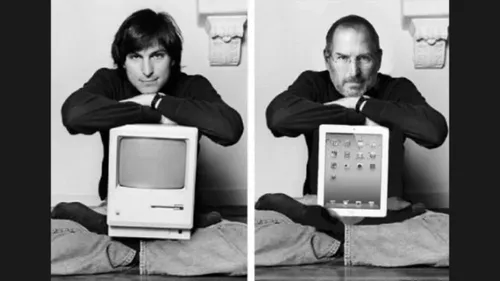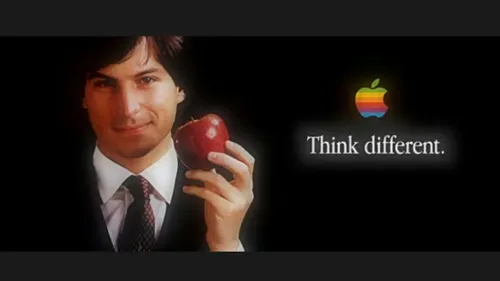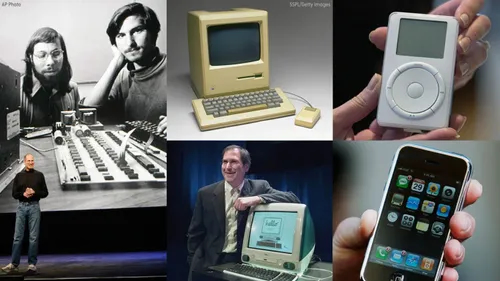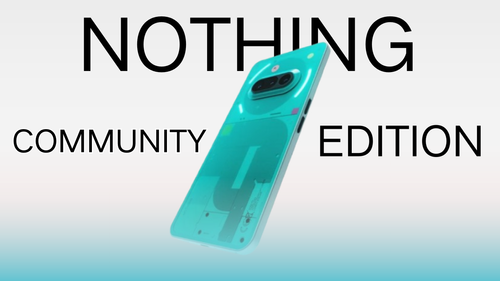Ad
Articles
From Garage to Greatness: The Story of Apple Inc.

Apple Inc. has become a household name synonymous with innovation, quality, and design. Founded in 1976, the company has transformed the technology landscape with its products and services. This article delves into the history of Apple, its major milestones, recent updates as of 2024, and what the future might hold for this tech titan.
Company Overview
| Attribute | Details |
|---|---|
| Formerly | Apple Computer, Inc. |
| Date Founded | April 1, 1976 |
| Ticker Symbol | AAPL |
| Share Price | $228.2 (market close, Sep. 20, 2024) |
| Market Capitalization | $3.47 trillion |
| Annual Revenue | $385.60 billion |
| Earnings Per Share (Previous Year) | $6.57 |
| Sector | Information Technology |
| Industry | Technology Hardware, Storage & Peripherals |
| CEO | Mr. Timothy D. Cook |
The Origin of the Name "Apple"

The name "Apple" has intrigued fans and industry insiders alike since the company’s inception. While several theories have emerged regarding the origin of the name, the truth is simpler and more personal.
Theories About the Name:
- Biblical Reference: Some suggest the name was inspired by Eve’s bite from the forbidden fruit in the Garden of Eden.
- Mythological Influence: Another theory relates to Nymphus, who gained immortality by eating a golden apple.
- Tragic End: Some link the name to Alan Turing, the father of modern computing, who died after eating a poisoned apple.
- Health Saying: The popular saying “an apple a day keeps the doctor away” has also been mentioned.
- Casual Approach: It’s said that the founders wanted a more approachable name.
- Alphabetical Advantage: The founders, particularly Jobs and Wozniak, aimed for Apple to appear before Atari in phone books.
The Real Story
In reality, Steve Jobs named the company Apple simply because he liked the fruit. Following a fruitarian diet, he suggested the name to co-founder Steve Wozniak after visiting an apple orchard. This personal connection to the name reflects the casual, innovative spirit that would define the company. Interestingly, Apple’s first logo, designed by third co-founder Ronald Wayne in 1976, featured Isaac Newton sitting under an apple tree, reinforcing the brand’s roots.
The Founding Years (1976-1980)

Apple was founded on April 1, 1976, by Steve Jobs, Steve Wozniak, and Ronald Wayne. The trio aimed to make computers more accessible to the public. The release of the Apple I in 1976 marked the company's first foray into personal computing, albeit as a kit requiring assembly. Its successor, the Apple II, launched in 1977, was one of the first highly successful mass-produced microcomputer products, featuring color graphics and an open architecture.
Milestones:
- 1976: Release of Apple I
- 1977: Launch of Apple II, leading to significant sales and popularity.
Going Public and the Rise of the Macintosh (1980-1990)
Apple went public in 1980, creating instant millionaires and providing the capital necessary for further development. In 1984, Apple introduced the Macintosh, the first successful personal computer with a graphical user interface (GUI) and a mouse, fundamentally changing how users interacted with computers.
Key Events:
- 1980: Apple IPO, raising $110 million.
- 1984: Launch of the Macintosh, followed by the iconic Super Bowl ad directed by Ridley Scott.
However, the company faced challenges in the late '80s due to competition from IBM-compatible PCs and internal management struggles, leading to a decline in market share.
The Return of Steve Jobs and Reinvention (1997-2011)
After years of stagnation, Steve Jobs returned to Apple in 1997, following the acquisition of NeXT, the company he founded after leaving Apple. His return marked the beginning of a new era, emphasizing design, innovation, and a cohesive ecosystem.
Significant Products:
- 1998: Introduction of the iMac, a revolutionary all-in-one computer that reinvigorated Apple’s brand.
- 2001: Launch of the iPod, which redefined how people listened to music.
In 2007, Apple rebranded itself as a mobile devices company, launching the iPhone, which has since become one of the most influential products in technology history. The iPhone's introduction revolutionized the smartphone market, integrating powerful hardware with intuitive software.
Key Milestones:
- 2007: Launch of the iPhone.
- 2010: Introduction of the iPad, leading to a new category in personal computing.
Recent Developments and Innovations (2012-2024)
In the years following Jobs' death in 2011, Apple continued to innovate under the leadership of Tim Cook. The company expanded its product line and services while focusing on privacy, security, and sustainability.
Notable Releases:
Apple Watch (2015): Entering the wearables market, the Apple Watch became the best-selling smartwatch globally, integrating fitness tracking with smart features. Apple Music (2015): Launched as a response to the growing demand for music streaming services, Apple Music has become a key player in the music industry.
Environmental and Privacy Initiatives:
Apple has made significant strides in promoting sustainability. As of 2024, the company has committed to becoming carbon neutral across its entire supply chain by 2030. Moreover, privacy has become a cornerstone of Apple’s marketing strategy, with features like App Tracking Transparency gaining significant attention.
Recent Products and Updates:
iPhone 15 (2023): Introduced with advanced camera technology, USB-C charging, and improved battery life. Apple Vision Pro (2024): Launched as Apple's first foray into mixed reality, blending augmented and virtual reality experiences. Enhanced Services: Continued expansion of services such as Apple TV+, Apple Arcade, and Apple Fitness+, creating a comprehensive ecosystem.
Current Landscape and Market Position (2024)
As of 2024, Apple remains one of the most valuable companies globally, with a market capitalization exceeding $3.47 trillion. Its strong brand loyalty and innovative products have kept it at the forefront of technology. The company continues to dominate the smartphone market, holding significant shares in wearables, tablets, and services.
Challenges:
While Apple thrives, it faces challenges from increasing competition, regulatory scrutiny, and supply chain vulnerabilities. The ongoing tension with governments over privacy and antitrust issues highlights the complexities of its global operations.
Looking Ahead: The Future of Apple
As Apple moves forward, its focus will likely remain on enhancing user experience through technological innovation. The company aims to leverage artificial intelligence and machine learning across its product range. Additionally, the potential integration of augmented reality into everyday applications could reshape how consumers interact with technology.
Upcoming Innovations:
- AI Integration: Anticipated advancements in Siri and personalized user experiences.
- Sustainability Initiatives: Continuous efforts to innovate in eco-friendly materials and renewable energy sources.
Apple Inc.'s journey from a garage startup to a global technology leader is a testament to innovation, resilience, and vision. With its commitment to excellence and an ever-expanding ecosystem of products and services, Apple is poised to shape the future of technology for years to come. As customers, we can look forward to witnessing the next chapter in this remarkable story, driven by the same principles that guided its founders over four decades ago.
Follow Us:
Ad
Recent News

Lenovo Unveils New Yoga, IdeaPad and Slim Series AI PCs at CES 2026
07-Jan-2026 12:48 PM

Oppo Reno 15 Series India Launch Confirmed for January 8
07-Jan-2026 12:58 PM

Redmi Note 15 5G Officially Launched in India
06-Jan-2026 09:11 AM

Oppo A6s Set to Launch in 2026 With 7,000mAh Battery: Check this out
05-Jan-2026 09:05 AM

TCL Note A1 Nxtpaper Launched Globally: Check this out!
31-Dec-2025 09:11 AM
Reviews & Guides
View All

Nothing Phone 3a Community Edition First Impressions: A Fresh Take on Budget Smartphones

Realme P4x 5G Review: Budget-Friendly Beast with Epic Battery Life

Sony BRAVIA 7 Mini LED K-65XR70 vs. Haier Mini LED H65M95EUX

Samsung QN90F (65QN90FAU) Review: The King of Bright-Room Viewing

Best Air Purifiers for Asthma Patients

Single Door vs Double Door vs Side-by-Side Refrigerators

Best LG Washing Machines in India

Best Cameras Under ₹50,000 in India
Ad
Latest Mobiles In India
Ad
Ad












